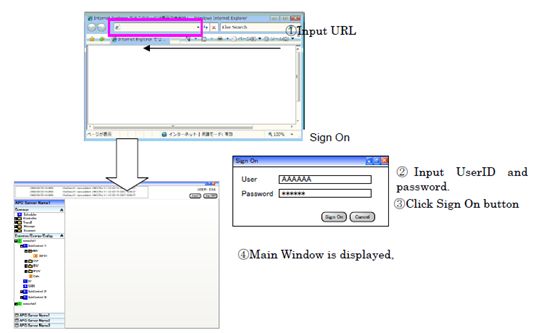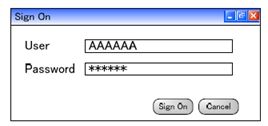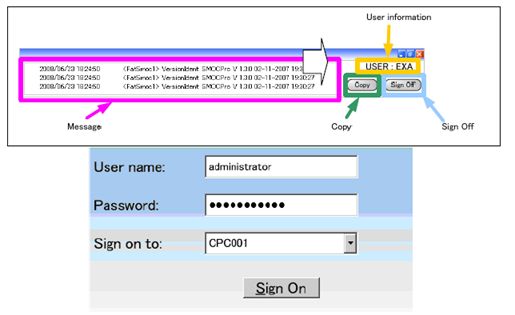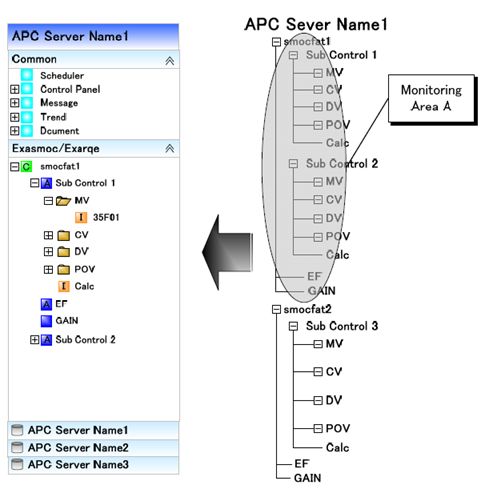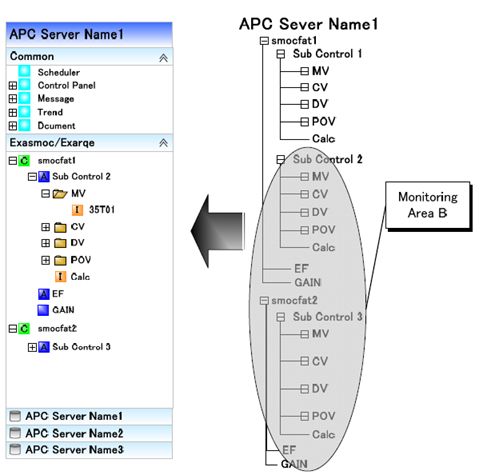- javaweb中@Component和@Mapper和@Service和@RestController这几个注解要加在哪?为什么?
瑞金彭于晏
mavenjavaspringbootspring
在JavaWeb开发中特别是在使用Spring框架(包括SpringBoot)时,@Component、@Mapper、@Service、@RestController这些注解扮演着非常重要的角色,它们用于定义组件的类型,并帮助Spring框架进行自动装配和依赖注入。下面分别解释这些注解应该加在哪里以及为什么:1.@Component加在哪里:@Component可以加在任何类上,表示这个类是一个
- springboot是如何在没有web.xml的情况下在外部tomcat启动的
菜鸟王老汉
spring
最近在公司部署测试环境的时候遇到了问题,本地用springboot内嵌tomcat启动没有问题,部署到测试环境的外部tomcat就不加载,在咨询了同事之后在启动类上继承了SpringBootServletInitializer之后就没有了问题,但并没有深入去想。由于servlet的规范是要配置web.xml的,包括Struts2和spring都是要在web.xml配置的,有一天在服务器上看编译后的
- ServerStatus牛逼!!
架构文摘JGWZ
学习工具开源软件
作为一名攻城狮,面对各种服务器内存飙高、CPU猛增、磁盘打满等等服务器问题,可谓是伤透了我们的心。不仅要开发,还要处理这些问题,大把的时间浪费了,这时候一个好的全面的监控工具尤为重要了。所以,带着这个问题,为大家一个酷炫高逼格的服务器探针的监控工具:ServerStatus介绍ServerStatus是一个免费开源的监控工具,并且提供了一个直观的Web页面,极大的方便了开发人员。特性实时监控,如在
- 从零开始学机器学习——构建一个推荐web应用
努力的小雨
机器学习机器学习前端人工智能
首先给大家介绍一个很好用的学习地址:https://cloudstudio.net/columns今天,我们终于将分类器这一章节学习完活了,和回归一样,最后一章节用来构建web应用程序,我们会回顾之前所学的知识点,并新增一个web应用用来让模型和用户交互。所以今天的主题是美食推荐。美食推荐Web应用程序首先,请不要担心,本章节并不会涉及过多的前端知识点。我们此次的学习重点在于机器学习本身,因此我们
- 在使用selenium进行爬虫时, add_experimental_optio(),add_argument()的用法
数据牧马人
selenium爬虫测试工具
driver.add_experimental_option('excludeSwitches',['enable-automation'])是在使用SeleniumWebDriver与浏览器交互时设置的一行代码。这行代码用于禁用浏览器中的自动化检测。具体来说,当你在使用SeleniumWebDriver与浏览器交互时,有些浏览器(例如GoogleChrome)可能会检测到自动化行为(例如,通过检
- 【前端入门】应该了解和知道的几个国内外前端开发资源网站
爱上大树的小猪
前端
与大家分享一下几个国内外前端开发资源网站国际资源MDNWebDocs(MozillaDeveloperNetwork)用途:MDN是Web技术领域最全面的文档库之一,涵盖了HTML、CSS、JavaScript以及浏览器API等。链接:https://developer.mozilla.orgW3Schools用途:适合初学者学习Web技术,提供从基础到进阶的教程,同时还有在线练习环境。链接:ht
- Python(1)Python全方位指南:定义、应用与零基础入门实战
一个天蝎座 白勺 程序猿
Python入门到精通python开发语言
背景:为什么Python成为开发者必备技能?Python自1991年发布以来,凭借“简单高效”的设计理念,成为全球增长最快的编程语言。根据TIOBE2023年榜单,Python稳居前三,其核心竞争力包括:开发效率高:代码量仅为Java的1/5,C++的1/10。跨领域通吃:从Web开发到AI训练,覆盖90%以上技术场景。企业级应用:YouTube用Python处理视频推荐,NAS
- servletcontext的作用详细介绍
时光旅人01号
Javawebservlettomcatjavaweb.xmlhttp
1、什么是servletcontextweb容器在启动的时候,他会为每个web程序创建一个对应的servletcontext对象,他代表的是当前的web应用:共享数据我在这个Servlet中保存的数据,可以在宁一个servlet中拿到:例子如下设置数据publicclassServlettestextendsHttpServlet{protectedvoiddoPost(HttpServletRe
- Python与Web 3.0:重新定义数字身份验证的未来
Echo_Wish
Python!实战!python前端开发语言
Python与Web3.0:重新定义数字身份验证的未来随着Web3.0的迅猛发展,传统的身份验证方式正面临越来越大的挑战。从依赖中心化服务器存储用户数据,到如今去中心化、用户掌控数据的新时代,身份验证系统经历了前所未有的变革。而作为一个人工智能、区块链和Python技术的深度爱好者,我认为Python将成为构建Web3.0身份验证系统的重要工具。今天,我们就来聊聊如何结合Python与Web3.0
- 【大模型开发】大模型转换为 NCNN 格式并在 微信小程序 中进行调用
云博士的AI课堂
大模型技术开发与实践哈佛博后带你玩转机器学习深度学习微信小程序小程序NCNN小程序调用大模型大模型部署大模型优化部署微信小程序
以下内容将介绍如何将大模型转换为NCNN格式并在微信小程序中进行调用。我们会从整体流程、模型转换工具、NCNNWebAssembly(WASM)编译与集成、小程序前端代码示例等方面进行详细讲解,并在最后给出优化方向与未来建议。目录背景与整体流程概述准备工作2.1常见模型格式与转换思路2.2环境与工具安装模型转换为NCNN格式3.1以ONNX模型为例3.2使用onnx2ncnn工具NCNN在微信小程
- python简单案例代码,python案例讲解视频
2401_84471631
python
这篇文章主要介绍了python简单案例代码,具有一定借鉴价值,需要的朋友可以参考下。希望大家阅读完这篇文章后大有收获,下面让小编带着大家一起了解一下。Python是一种高级,解释性,交互式且面向对象的脚本语言。Python的设计具有很高的可读性。它使用英语作为关键字,相对于而其他语言则使用标点符号作为语句结束不同,是依靠缩进作为结束。并且其语法结构比其他语言精简。Python是Web开发,游戏开发
- 使用OpenResty(基于Nginx和Lua)优化Web服务性能
随风九天
部署运维java性能九阴白骨爪openrestynginxlua
引言1.1OpenResty简介OpenResty是一个基于Nginx和Lua的高性能Web应用平台。它通过将Lua脚本嵌入到Nginx中,提供了强大的动态处理能力,适用于构建高性能的Web服务、API网关、动态内容生成等场景。1.2Nginx与Lua结合的优势高性能:Nginx本身就是一个高性能的HTTP和反向代理服务器,而Lua的嵌入使得动态处理能力大大增强。低资源消耗:Lua脚本的执行效率高
- 深入探索Ajax技术与应用实践
Javen Fang
本文还有配套的精品资源,点击获取简介:Ajax技术允许在不刷新整个页面的情况下进行网页内容的局部更新,大大提升了用户体验。文章详细解析了Ajax的核心组件和工作流程,并强调了其在Web开发中的重要性。此外,还探讨了Ajax的优点、应用场景以及在实际开发中需要注意的问题。通过学习Ajax,开发者可以设计出更加动态和高效的网页应用。1.Ajax技术概述和定义Ajax技术概述Ajax技术的核心在于其异步
- PHP与数据库连接常见问题及解决办法
奥顺互联_老张
php教程php数据库
PHP与数据库连接常见问题及解决办法在现代Web开发中,PHP与数据库的连接是不可或缺的一部分。无论是构建动态网站、内容管理系统(CMS)还是电子商务平台,PHP与数据库的交互都是核心功能之一。然而,在实际开发过程中,开发者常常会遇到各种与数据库连接相关的问题。本文将探讨PHP与数据库连接中的常见问题,并提供相应的解决办法。1.数据库连接失败问题描述在PHP中,连接数据库时最常见的错误是无法连接到
- Lua语言的嵌入式调试
涂瑷菡
包罗万象golang开发语言后端
Lua语言的嵌入式调试引言Lua是一种轻量级、高效的脚本语言,广泛应用于游戏开发、嵌入式系统、Web开发等领域。其简洁的语法和强大的扩展性使得Lua成为众多开发者的首选语言。在嵌入式系统中,由于资源有限,调试工作尤其重要。通过有效的调试手段,可以及时发现并解决潜在问题,提高系统的运行稳定性。本文将详细探讨Lua语言在嵌入式系统中的调试方法,包括调试工具、常见调试技巧和最佳实践等,旨在为开发者提供一
- Java语言的WebSocket
穆骊瑶
包罗万象golang开发语言后端
Java语言的WebSocket详解目录引言WebSocket概述2.1WebSocket的工作原理2.2WebSocket的优势Java中WebSocket的实现3.1JavaEE的WebSocketAPI3.2使用SpringBoot实现WebSocketWebSocket的应用场景WebSocket的优缺点总结1.引言在现代Web开发中,实时通信成为了一个关键需求。传统的HTTP协议是基于请
- selenium 等待方式
不负韶华ღ
#seleniumseleniumpython测试工具
概述在selenium中,等待指的是在执行下一个任务之前需要等待前一个任务完成,在前一个任务没有完成之前,后一个任务会一直处于阻塞状体,有点类似于数据库中的事务。比如,在定位元素之前需要加载完DOM。selenium有三种等待方式:显示等待、隐式等待、流畅等待。方式显示等待WebDriverWait(driver,timeout).until(method,message)显示等待是seleniu
- python selenium 点击按钮_Python Selenium等待用户单击按钮
Shu Wang
pythonselenium点击按钮
语境:>我的脚本使用seleniumwebdriver启动到网站>用户填写网站上的一些东西>用户将点击一个按钮,弹出确认()dialogbox询问用户“你想提交数据吗”我的本意:我的脚本会等到用户点击按钮.一旦检测到用户点击了该按钮,我的脚本就会获得一个元素的值,然后(不知何故)在dialogbox上单击OK.题:如何等待用户点击按钮?然后如何在dialogbox上单击“确定”?补充说明:使用:c
- selenium 等待ajax,如何等待Selenium IDE中的所有ajax请求完成?
华西怀
selenium等待ajax
我有一阵子没用过IDE。这是我用于WebDriver的。但算法翻译;JavaScript是JavaScript。这就是说,这取决于你的框架。对于角度,我用这个:publicbooleanwaitForAngularToLoad(WebDriverdriver,intwaitTimeInSeconds){WebDriverWaitwait=newWebDriverWait(driver,waitTi
- 85.HarmonyOS NEXT 网络请求与数据处理:构建可靠的数据层
harmonyos-next
温馨提示:本篇博客的详细代码已发布到git:https://gitcode.com/nutpi/HarmonyosNext可以下载运行哦!HarmonyOSNEXT网络请求与数据处理:构建可靠的数据层1.网络请求基础1.1基本概念概念说明使用场景HTTP请求基本的网络通信API调用WebSocket双向实时通信即时消息数据序列化数据格式转换请求/响应处理1.2HTTP请求封装classHttpCl
- Web3.0 从入门到实战:一站式开发指南
七七知享
Webweb3html5javascript区块链网络安全安全web安全
在科技浪潮持续翻涌的当下,Web3.0作为互联网发展的全新篇章,正以前所未有的姿态重塑数字世界格局。从去中心化应用(DApps)蓬勃兴起,到区块链技术成为底层支撑架构,Web3.0开启了一个用户真正掌控数据、价值自由流通的崭新时代。对于怀揣探索精神的开发者而言,投身Web3.0领域,不仅意味着解锁全新技术栈,更能参与塑造互联网的未来形态。本文精心打造了一套从理论基石铺陈,到实战项目落地的Web3.
- [特殊字符] 用Rust重塑Web开发速度极限:Hyperlane框架——开启高性能服务的「光年时代」[特殊字符]
LTPP
rust开发语言http服务器后端网络协议高并发
每秒百万级请求?Rust超新星Hyperlane框架让Web开发突破性能次元壁!颠覆性技术亮点:为何全球顶尖工程师正疯狂迁移至Hyperlane?⚡️「速度即正义」:重新定义Web性能天花板零延迟战场:实测万级并发下延迟低于5ms,让传统框架望尘莫及。Rust内核级优化:基于tokio异步运行时的极致封装,QPS突破5万+,内存占用极低,完美适配边缘计算与云原生场景。️「开发者狂喜」:5分钟极速上
- 腾讯 IEG 游戏前沿技术 一面复盘
andrew_1219
面试经验面试javasqlredis
前言投了个实习内推后台开发,本来要电话先交流的那天直接走流程下午面试了,对面两人,面了有一个小时,游戏本的构思续航忘记插电了最后还掉线了一下,趁着还记得面试内容复盘一下自我介绍一下答:您好,我是深大26届xxx的xxx,对贵公司后台开发的岗位很感兴趣。现在在xxx做后台开发实习生,负责项目的开发和运维相关,还有一部分系统设计相关的的工作,之前在学校中也做过web开发相关的项目。了解到贵公司正在招聘
- DataEase:一款国产开源数据可视化分析工具
不剪发的Tony老师
编程技能BI数据分析DataEase
DataEase是由飞致云开发的一款基于Web的数据可视化BI工具,支持丰富的数据源连接,能够通过拖拉拽方式快速制作图表,帮助用户快速分析业务数据并洞察其趋势,为企业的业务改进与优化提供支持。DataEase的优势在于:开源开放:零门槛,线上快速获取和安装,按月迭代;简单易用:极易上手,通过鼠标点击和拖拽即可完成分析;全场景支持:跨平台安装和多样化嵌入支持;安全分享:支持多种数据分享方式,确保数据
- PyQt6嵌入HTML5内容教程
mosquito_lover1
pythonpyqthtml5
在PyQt6中嵌入HTML5内容可以通过QWebEngineView实现。QWebEngineView是一个基于Chromium的浏览器引擎,能够渲染HTML5内容。以下是一个简单的示例,展示如何在PyQt6中嵌入HTML5页面:1.安装PyQt6和PyQt6-WebEnginepipinstallPyQt6PyQt6-WebEngine2.创建PyQt6应用程序并嵌入HTML5内容imports
- 2.5 python接口编程
nervermore990
Pythonpython
在现代软件开发的复杂生态系统中,不同系统、模块之间的交互协作至关重要。接口编程作为一种关键机制,定义了组件之间的通信规范与交互方式。Python凭借其卓越的灵活性、丰富的库资源以及简洁易读的语法,在接口编程领域占据了重要地位,广泛应用于各类项目开发中,从Web应用到数据处理,再到自动化测试等场景。一、接口编程基础概念(一)接口的定义从本质上讲,接口是一种抽象的规范,它规定了一组方法或行为的签名,但
- 如何在github上参与开源项目
这个懒人
github开源软件
1.创建GitHub账号如果你还没有GitHub账号,首先需要注册一个:访问GitHub官网。点击右上角的“Signup”按钮,填写注册信息并完成注册。2.找到感兴趣的项目GitHub上有成千上万的开源项目,你可以通过以下方式找到感兴趣的项目:搜索项目:在GitHub首页的搜索框中输入关键词,例如“机器学习”、“Web开发”等。使用高级搜索功能,通过语言、标签等过滤条件找到合适的项目。浏览Tren
- 树莓派raspberry搭建web服务(基于LAMP)
最古琴
撸了今年阿里、头条和美团的面试,我有一个重要发现.......>>>本文永久地址:https://my.oschina.net/bysu/blog/15502121.安装apachesudoapt-getinstallapache2php-gdphp安装完之后,怎么确认是否安装成功了呢?可以通过以下几种方式确认。a.可以查看是否已有相应的服务ps-ef|grepapache会看到4条服务,其中主进
- nweb_nweb:小型安全的Web服务器(仅静态页面)
cusi77914
pythonlinuxjavasocket编程语言
您是否曾经想过运行一个小型,安全的Web服务器,而不必担心使用安装和配置可能很复杂的功能强大的Web服务器?您是否想知道如何编写一个通过网络套接字接收传入消息的程序?您是否曾经希望自己的Web服务器进行试验和学习?2012年将进行进一步更新,以支持最新的Web服务器和浏览器标准以及代码更新。好吧,别无所求-nweb是您所需要的。这是一个只有200行C源代码的简单Web服务器。它以常规用户身份运行,
- html css 笔记
小箌
htmlcss笔记
01_浏览器相关知识五大主流浏览器:ChromeSafariIEFirefoxOpera(拥有自己的内核)四大内核:webkitTridentGeckoblink.02_网页相关知识构成网址网站网页网页标准:结构表现行为分别对应HTMLCSSJavaScript03_HTML简介HTML是什么译为:标记语言超文本:比普通的文本信息含量更多04_HTML初体验保存:Ctrl+S后缀:.html程序员
- java线程的无限循环和退出
3213213333332132
java
最近想写一个游戏,然后碰到有关线程的问题,网上查了好多资料都没满足。
突然想起了前段时间看的有关线程的视频,于是信手拈来写了一个线程的代码片段。
希望帮助刚学java线程的童鞋
package thread;
import java.text.SimpleDateFormat;
import java.util.Calendar;
import java.util.Date
- tomcat 容器
BlueSkator
tomcatWebservlet
Tomcat的组成部分 1、server
A Server element represents the entire Catalina servlet container. (Singleton) 2、service
service包括多个connector以及一个engine,其职责为处理由connector获得的客户请求。
3、connector
一个connector
- php递归,静态变量,匿名函数使用
dcj3sjt126com
PHP递归函数匿名函数静态变量引用传参
<!doctype html>
<html lang="en">
<head>
<meta charset="utf-8">
<title>Current To-Do List</title>
</head>
<body>
- 属性颜色字体变化
周华华
JavaScript
function changSize(className){
var diva=byId("fot")
diva.className=className;
}
</script>
<style type="text/css">
.max{
background: #900;
color:#039;
- 将properties内容放置到map中
g21121
properties
代码比较简单:
private static Map<Object, Object> map;
private static Properties p;
static {
//读取properties文件
InputStream is = XXX.class.getClassLoader().getResourceAsStream("xxx.properti
- [简单]拼接字符串
53873039oycg
字符串
工作中遇到需要从Map里面取值拼接字符串的情况,自己写了个,不是很好,欢迎提出更优雅的写法,代码如下:
import java.util.HashMap;
import java.uti
- Struts2学习
云端月影
最近开始关注struts2的新特性,从这个版本开始,Struts开始使用convention-plugin代替codebehind-plugin来实现struts的零配置。
配置文件精简了,的确是简便了开发过程,但是,我们熟悉的配置突然disappear了,真是一下很不适应。跟着潮流走吧,看看该怎样来搞定convention-plugin。
使用Convention插件,你需要将其JAR文件放
- Java新手入门的30个基本概念二
aijuans
java新手java 入门
基本概念: 1.OOP中唯一关系的是对象的接口是什么,就像计算机的销售商她不管电源内部结构是怎样的,他只关系能否给你提供电就行了,也就是只要知道can or not而不是how and why.所有的程序是由一定的属性和行为对象组成的,不同的对象的访问通过函数调用来完成,对象间所有的交流都是通过方法调用,通过对封装对象数据,很大限度上提高复用率。 2.OOP中最重要的思想是类,类是模板是蓝图,
- jedis 简单使用
antlove
javarediscachecommandjedis
jedis.RedisOperationCollection.java
package jedis;
import org.apache.log4j.Logger;
import redis.clients.jedis.Jedis;
import java.util.List;
import java.util.Map;
import java.util.Set;
pub
- PL/SQL的函数和包体的基础
百合不是茶
PL/SQL编程函数包体显示包的具体数据包
由于明天举要上课,所以刚刚将代码敲了一遍PL/SQL的函数和包体的实现(单例模式过几天好好的总结下再发出来);以便明天能更好的学习PL/SQL的循环,今天太累了,所以早点睡觉,明天继续PL/SQL总有一天我会将你永远的记载在心里,,,
函数;
函数:PL/SQL中的函数相当于java中的方法;函数有返回值
定义函数的
--输入姓名找到该姓名的年薪
create or re
- Mockito(二)--实例篇
bijian1013
持续集成mockito单元测试
学习了基本知识后,就可以实战了,Mockito的实际使用还是比较麻烦的。因为在实际使用中,最常遇到的就是需要模拟第三方类库的行为。
比如现在有一个类FTPFileTransfer,实现了向FTP传输文件的功能。这个类中使用了a
- 精通Oracle10编程SQL(7)编写控制结构
bijian1013
oracle数据库plsql
/*
*编写控制结构
*/
--条件分支语句
--简单条件判断
DECLARE
v_sal NUMBER(6,2);
BEGIN
select sal into v_sal from emp
where lower(ename)=lower('&name');
if v_sal<2000 then
update emp set
- 【Log4j二】Log4j属性文件配置详解
bit1129
log4j
如下是一个log4j.properties的配置
log4j.rootCategory=INFO, stdout , R
log4j.appender.stdout=org.apache.log4j.ConsoleAppender
log4j.appender.stdout.layout=org.apache.log4j.PatternLayout
log4j.appe
- java集合排序笔记
白糖_
java
public class CollectionDemo implements Serializable,Comparable<CollectionDemo>{
private static final long serialVersionUID = -2958090810811192128L;
private int id;
private String nam
- java导致linux负载过高的定位方法
ronin47
定位java进程ID
可以使用top或ps -ef |grep java
![图片描述][1]
根据进程ID找到最消耗资源的java pid
比如第一步找到的进程ID为5431
执行
top -p 5431 -H
![图片描述][2]
打印java栈信息
$ jstack -l 5431 > 5431.log
在栈信息中定位具体问题
将消耗资源的Java PID转
- 给定能随机生成整数1到5的函数,写出能随机生成整数1到7的函数
bylijinnan
函数
import java.util.ArrayList;
import java.util.List;
import java.util.Random;
public class RandNFromRand5 {
/**
题目:给定能随机生成整数1到5的函数,写出能随机生成整数1到7的函数。
解法1:
f(k) = (x0-1)*5^0+(x1-
- PL/SQL Developer保存布局
Kai_Ge
近日由于项目需要,数据库从DB2迁移到ORCAL,因此数据库连接客户端选择了PL/SQL Developer。由于软件运用不熟悉,造成了很多麻烦,最主要的就是进入后,左边列表有很多选项,自己删除了一些选项卡,布局很满意了,下次进入后又恢复了以前的布局,很是苦恼。在众多PL/SQL Developer使用技巧中找到如下这段:
&n
- [未来战士计划]超能查派[剧透,慎入]
comsci
计划
非常好看,超能查派,这部电影......为我们这些热爱人工智能的工程技术人员提供一些参考意见和思想........
虽然电影里面的人物形象不是非常的可爱....但是非常的贴近现实生活....
&nbs
- Google Map API V2
dai_lm
google map
以后如果要开发包含google map的程序就更麻烦咯
http://www.cnblogs.com/mengdd/archive/2013/01/01/2841390.html
找到篇不错的文章,大家可以参考一下
http://blog.sina.com.cn/s/blog_c2839d410101jahv.html
1. 创建Android工程
由于v2的key需要G
- java数据计算层的几种解决方法2
datamachine
javasql集算器
2、SQL
SQL/SP/JDBC在这里属于一类,这是老牌的数据计算层,性能和灵活性是它的优势。但随着新情况的不断出现,单纯用SQL已经难以满足需求,比如: JAVA开发规模的扩大,数据量的剧增,复杂计算问题的涌现。虽然SQL得高分的指标不多,但都是权重最高的。
成熟度:5星。最成熟的。
- Linux下Telnet的安装与运行
dcj3sjt126com
linuxtelnet
Linux下Telnet的安装与运行 linux默认是使用SSH服务的 而不安装telnet服务 如果要使用telnet 就必须先安装相应的软件包 即使安装了软件包 默认的设置telnet 服务也是不运行的 需要手工进行设置 如果是redhat9,则在第三张光盘中找到 telnet-server-0.17-25.i386.rpm
- PHP中钩子函数的实现与认识
dcj3sjt126com
PHP
假如有这么一段程序:
function fun(){
fun1();
fun2();
}
首先程序执行完fun1()之后执行fun2()然后fun()结束。
但是,假如我们想对函数做一些变化。比如说,fun是一个解析函数,我们希望后期可以提供丰富的解析函数,而究竟用哪个函数解析,我们希望在配置文件中配置。这个时候就可以发挥钩子的力量了。
我们可以在fu
- EOS中的WorkSpace密码修改
蕃薯耀
修改WorkSpace密码
EOS中BPS的WorkSpace密码修改
>>>>>>>>>>>>>>>>>>>>>>>>>>>>>>>>>>>>>>>>>>
蕃薯耀 201
- SpringMVC4零配置--SpringSecurity相关配置【SpringSecurityConfig】
hanqunfeng
SpringSecurity
SpringSecurity的配置相对来说有些复杂,如果是完整的bean配置,则需要配置大量的bean,所以xml配置时使用了命名空间来简化配置,同样,spring为我们提供了一个抽象类WebSecurityConfigurerAdapter和一个注解@EnableWebMvcSecurity,达到同样减少bean配置的目的,如下:
applicationContex
- ie 9 kendo ui中ajax跨域的问题
jackyrong
AJAX跨域
这两天遇到个问题,kendo ui的datagrid,根据json去读取数据,然后前端通过kendo ui的datagrid去渲染,但很奇怪的是,在ie 10,ie 11,chrome,firefox等浏览器中,同样的程序,
浏览起来是没问题的,但把应用放到公网上的一台服务器,
却发现如下情况:
1) ie 9下,不能出现任何数据,但用IE 9浏览器浏览本机的应用,却没任何问题
- 不要让别人笑你不能成为程序员
lampcy
编程程序员
在经历六个月的编程集训之后,我刚刚完成了我的第一次一对一的编码评估。但是事情并没有如我所想的那般顺利。
说实话,我感觉我的脑细胞像被轰炸过一样。
手慢慢地离开键盘,心里很压抑。不禁默默祈祷:一切都会进展顺利的,对吧?至少有些地方我的回答应该是没有遗漏的,是不是?
难道我选择编程真的是一个巨大的错误吗——我真的永远也成不了程序员吗?
我需要一点点安慰。在自我怀疑,不安全感和脆弱等等像龙卷风一
- 马皇后的贤德
nannan408
马皇后不怕朱元璋的坏脾气,并敢理直气壮地吹耳边风。众所周知,朱元璋不喜欢女人干政,他认为“后妃虽母仪天下,然不可使干政事”,因为“宠之太过,则骄恣犯分,上下失序”,因此还特地命人纂述《女诫》,以示警诫。但马皇后是个例外。
有一次,马皇后问朱元璋道:“如今天下老百姓安居乐业了吗?”朱元璋不高兴地回答:“这不是你应该问的。”马皇后振振有词地回敬道:“陛下是天下之父,
- 选择某个属性值最大的那条记录(不仅仅包含指定属性,而是想要什么属性都可以)
Rainbow702
sqlgroup by最大值max最大的那条记录
好久好久不写SQL了,技能退化严重啊!!!
直入主题:
比如我有一张表,file_info,
它有两个属性(但实际不只,我这里只是作说明用):
file_code, file_version
同一个code可能对应多个version
现在,我想针对每一个code,取得它相关的记录中,version 值 最大的那条记录,
SQL如下:
select
*
- VBScript脚本语言
tntxia
VBScript
VBScript 是基于VB的脚本语言。主要用于Asp和Excel的编程。
VB家族语言简介
Visual Basic 6.0
源于BASIC语言。
由微软公司开发的包含协助开发环境的事
- java中枚举类型的使用
xiao1zhao2
javaenum枚举1.5新特性
枚举类型是j2se在1.5引入的新的类型,通过关键字enum来定义,常用来存储一些常量.
1.定义一个简单的枚举类型
public enum Sex {
MAN,
WOMAN
}
枚举类型本质是类,编译此段代码会生成.class文件.通过Sex.MAN来访问Sex中的成员,其返回值是Sex类型.
2.常用方法
静态的values()方
